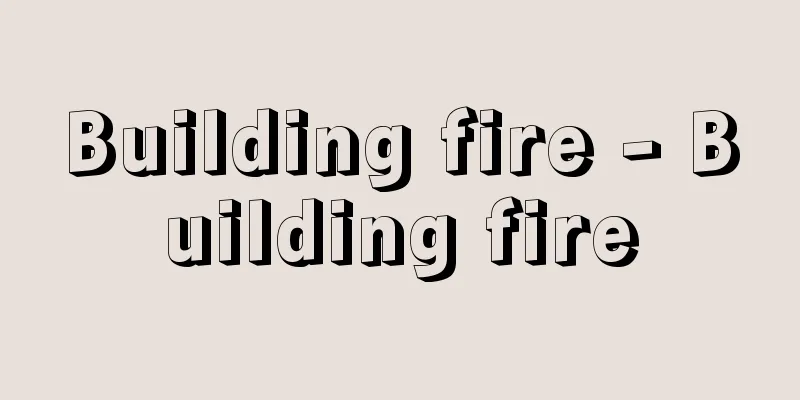Building fire - Building fire

|
During the period of rapid economic growth, the building boom meant that people began to work on higher floors and in basements. People who had previously only known life on the first or second floor were forced to experience the change of living and working far from ground level. In basements and floors three and above, horizontal evacuation leads to a dead end. From there, people must take vertical escape routes such as stairs to reach the final evacuation site on the ground level. For this reason, it is most important in buildings to prevent smoke from entering vertical escape routes (vertical escape routes). Source: Heibonsha World Encyclopedia, 2nd Edition Information |
|
経済の高度成長期におけるビル・ラッシュで人々は高層階や地下階で仕事をするのがごく普通のことになった。それまで1~2階の生活しか知らなかった人々が地上面からかけ離れた所に居住したり,活動するという変化をいやおうなく経験することになったわけである。地階や3階以上の階では水平方向に避難しても行止りになる。そこから,階段などの垂直方向の避難路を経て地上などの最終避難場所へたどりつかなければならない。このため垂直の避難路に煙が入らないようにすること(たて穴区画)がビルでは最も重要である。
出典 株式会社平凡社世界大百科事典 第2版について 情報 |
<<: Building Wind - Building Wind
>>: Morning glory - Calystegia japonica
Recommend
Shizuoka [city] - Shizuoka
A city in central Shizuoka Prefecture. It was inco...
Iki-Tsushima Quasi-National Park
A quasi-national park centered on the scenic coas...
Wittenwiler, H.
…a Swiss poet of the late Middle Ages. Also known...
Dodder vine - Dodder vine
An annual vine in the Convolvulaceae family (APG ...
Control experiment - Taisho experiment
An experiment in which a certain condition is remo...
Hiroshi Ohshima
Army officer and diplomat. Born in Gifu Prefectur...
Norizane Uesugi
Year of death: March 22, 1466 Year of birth: 1410 ...
Chichibu dolls
There are seven known puppet theaters in the Chich...
Chain isomerism
…Structural isomerism is classified according to ...
Gold digger
〘 noun 〙 The act of digging for gold and silver in...
Iroha Tea House - Iroha Jaya
A title for Kabuki and Joruri. Premiere Genroku 11...
William of Orange
⇒William Source: About Shogakukan Digital Daijisen...
Mimbre
…In the 5th period (1000-1400), under the influen...
Wedge wheat - Wedge wheat
… [origin] The botanical origins of the four whea...
Ignaz Stroof
1838‐1920 German chemical engineer. Born in Cologn...









